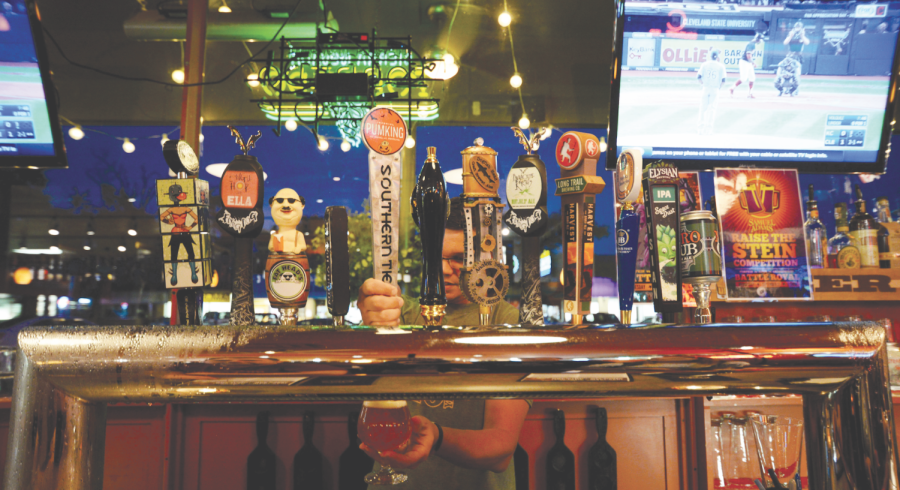Students wrestle with binge-drinking dangers
March 15, 2017
When people saw Erica Buschick, they saw a blonde-haired, blue-eyed beauty with an infectious smile. The 18-year-old special education major at Miami University had a passion for helping others, actively volunteering on campus and helping those less fortunate.
But on Jan. 20, Buschick’s life was cut short when she became another victim of dangerous binge drinking on campus. Her roommate found her unconscious the morning after a night of partying.
“It took everyone on campus by shock,” Annie Jones, a student at Miami, said. “Everyone (at college) drinks way too much, but no one thinks anything will actually come of it.”
Drinking over the years has become an activity that students see as an integral — sometimes expected — part of their college experience. It is a part of what Miami administrators call the “blackout culture,” where students extensively consume hard liquor while partying.
It remains a huge problem, as well. More than 1,800 college students die from alcohol-related injuries every year, according to the National Institute on Alcohol Abuse and Alcoholism.
No college is exempt from the statistics.
Kent State students consume alcohol at a higher rate than the state average, including the rate of binge drinking.
According to a study by the Portage Substance Abuse Prevention Coalition in 2013 — its most recent survey — 86.7 percent of Kent State students between the ages of 18 and 25 reported drinking in the past 30 days — 21 percent more than 18 to 25-year-olds in Ohio.
“There have been times when I’ve seen people throwing up into a garbage bag in a stairwell, or walking into the bathroom and throwing up in the toilet,” said Jake Ball, a freshman digital media production major. “(I’ve) realized (as a freshman) that people go crazy on Thursdays here.”
Binge drinking is defined by a blood alcohol concentration of 0.08 g/dL. Typically, that means four drinks for women and five drinks for men in a two-hour time period, according to the National Institute of Health.
While most binge drinking is a result of students trying to fit in, some use it as a coping method. Students may turn to alcohol in order to solve stress, insecurity, anxiety or relationship trauma.
“The reality is that many students binge drink and never experience lasting negative consequences,” said Deric Kenne, assistant professor of health policy and management at Kent State. “As a result, the negative consequences of alcohol get down-played, which increases the likelihood that something dangerous could happen.”
The culture around binge drinking is more dangerous than the drinking itself, Kenne said. Studies have shown that students’ perception of drinking behaviors among their peers are very different from reality.
“For example, while college kids believe about half of their peers drink alcohol 10 or more times a month, the reality is that only about 13 percent do,” Kenne said.
Consuming too much alcohol can cause confusion, incoherence, vomiting and unconsciousness.
Kenne advises for students to seek medical attention for these symptoms, instead of “sleeping it off” — a common remedy among students.
“It can result in alcohol poisoning, which is potentially fatal,” said Scott Dotterer, coordinator at the Office of Health Promotion. “It slows down your motor skills and (you) make decisions you wouldn’t normally make if you were sober.”
Rachel Duthie is the student life reporter, contact her at [email protected].












